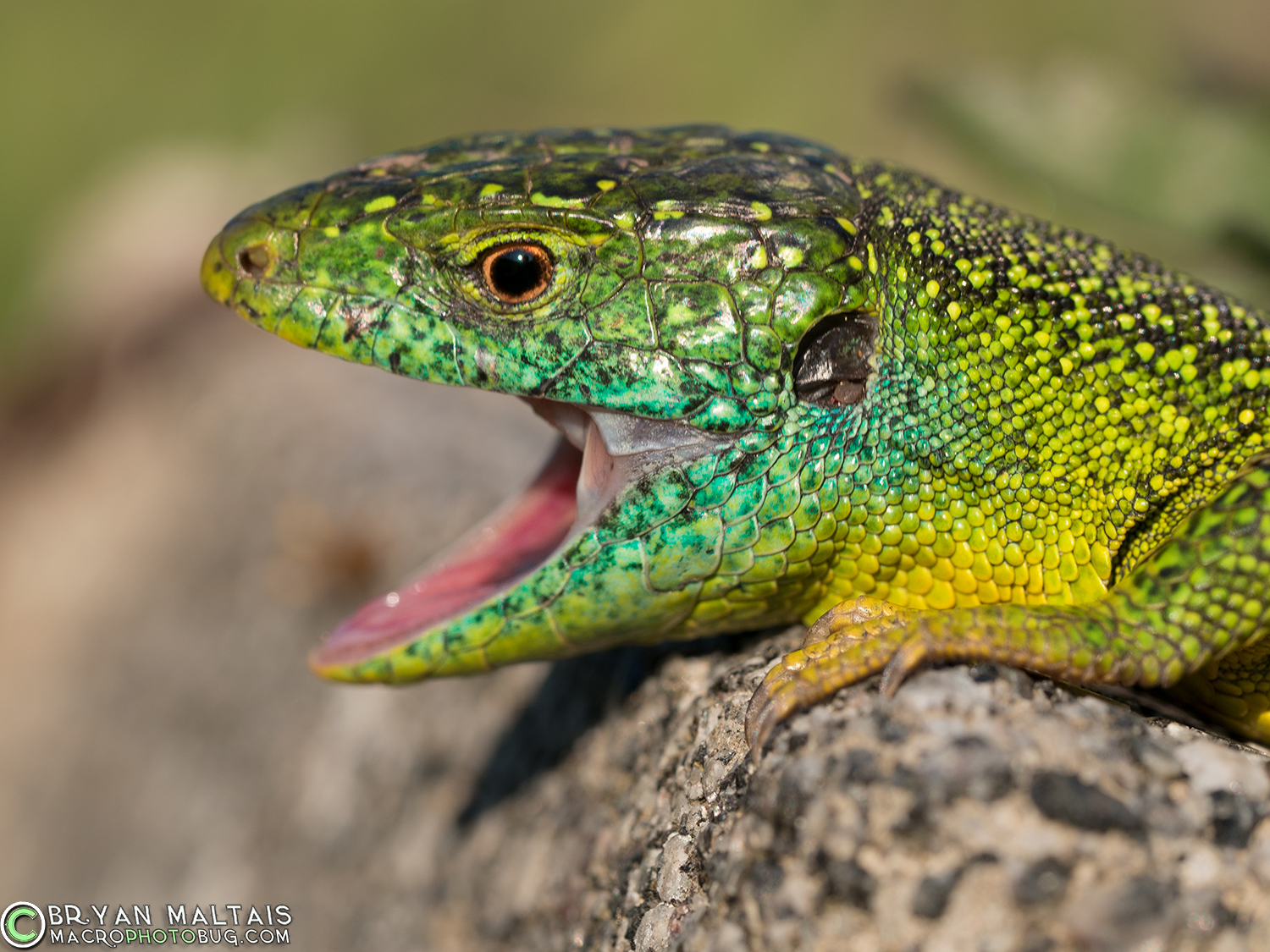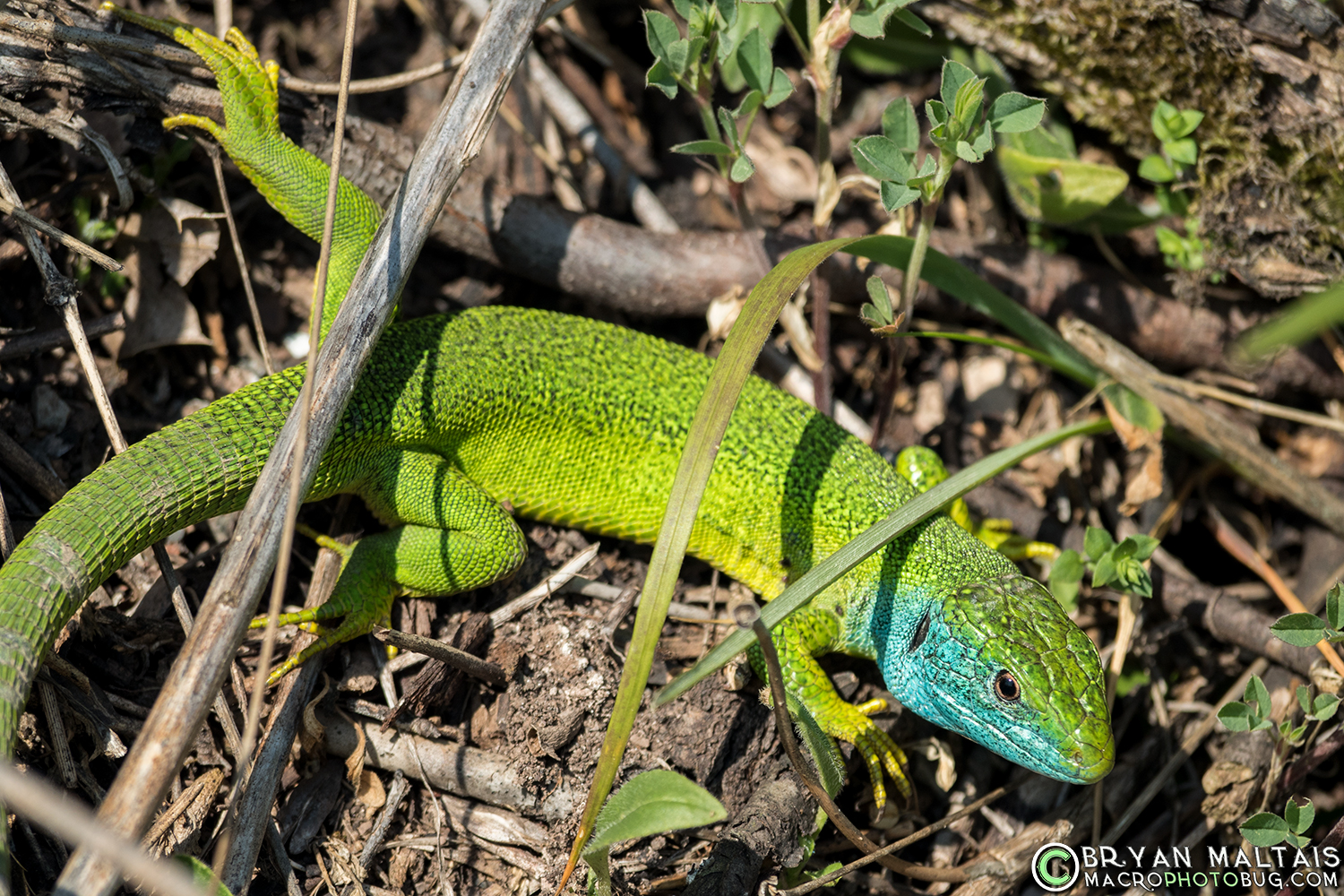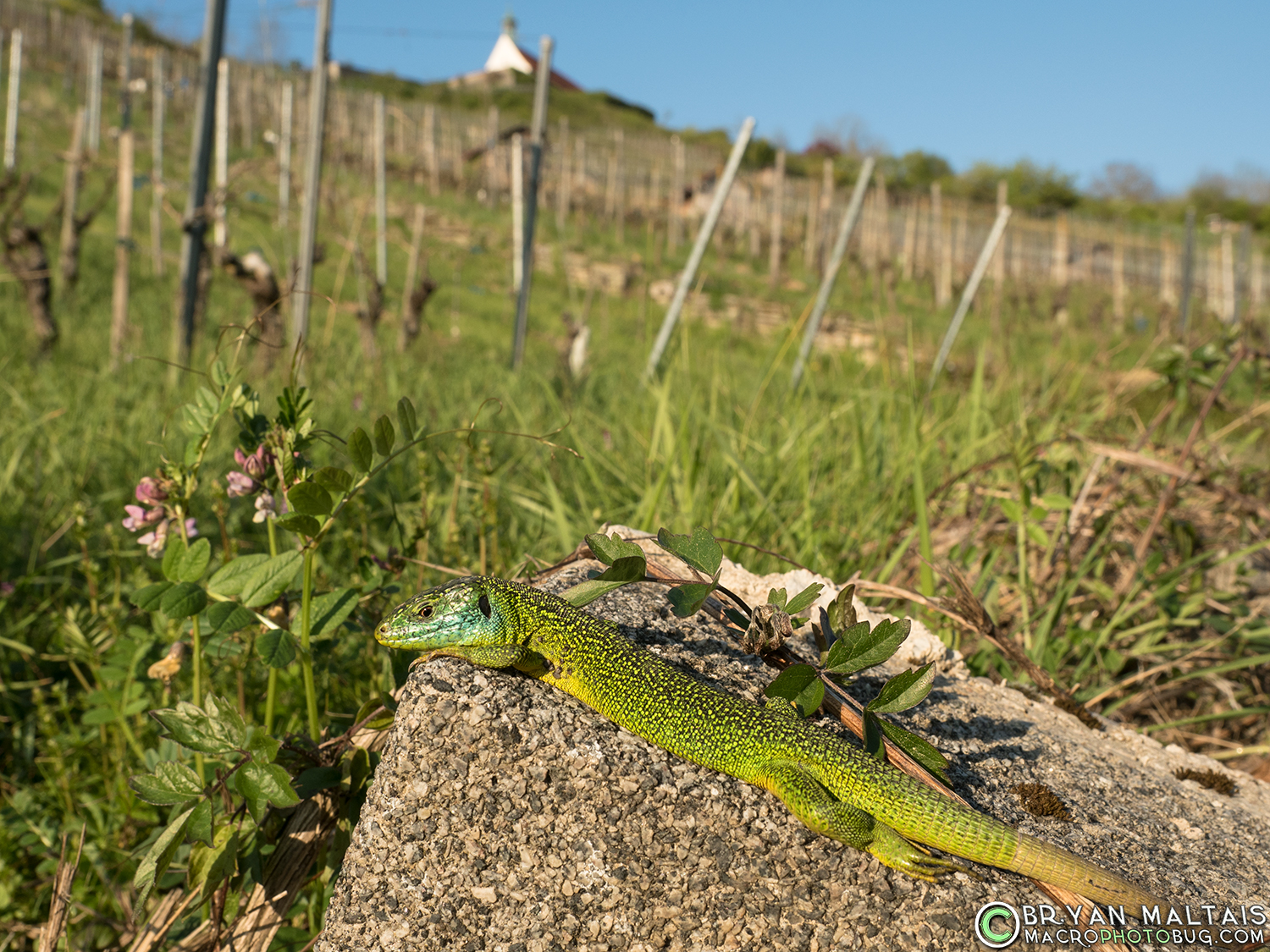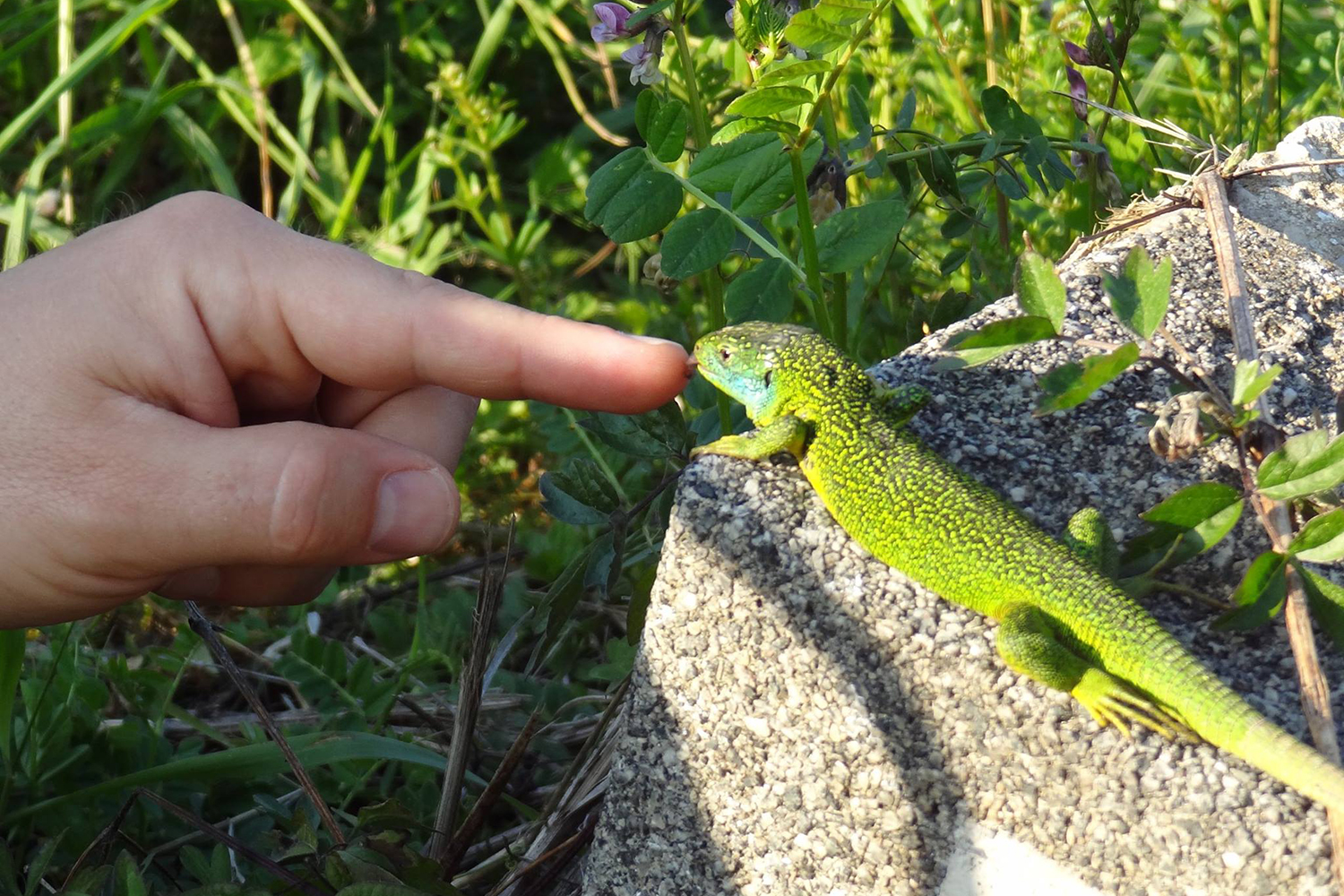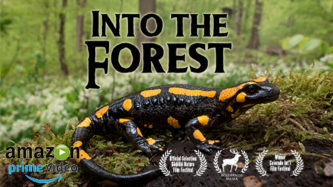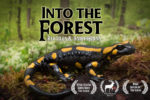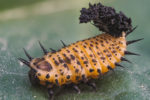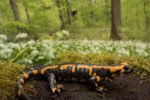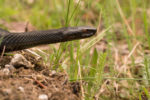Auf Smaragdeidechsen Jagd
News: Check out “Into the Forest”, new nature documentary about the reptiles and amphibians of central Europe.
My friend and fellow herper Markus Bühler told me about an rare population of Green Lizards that we should search for the next time I visit Germany. It’s an isolated population that was introduced in Wurmlingen, near the town of Tübingen. Markus is an accomplished amateur biologist who keeps a well-written blog about field zoology and paleontology. Check it out here: bestiarium.kryptozoologie.net.
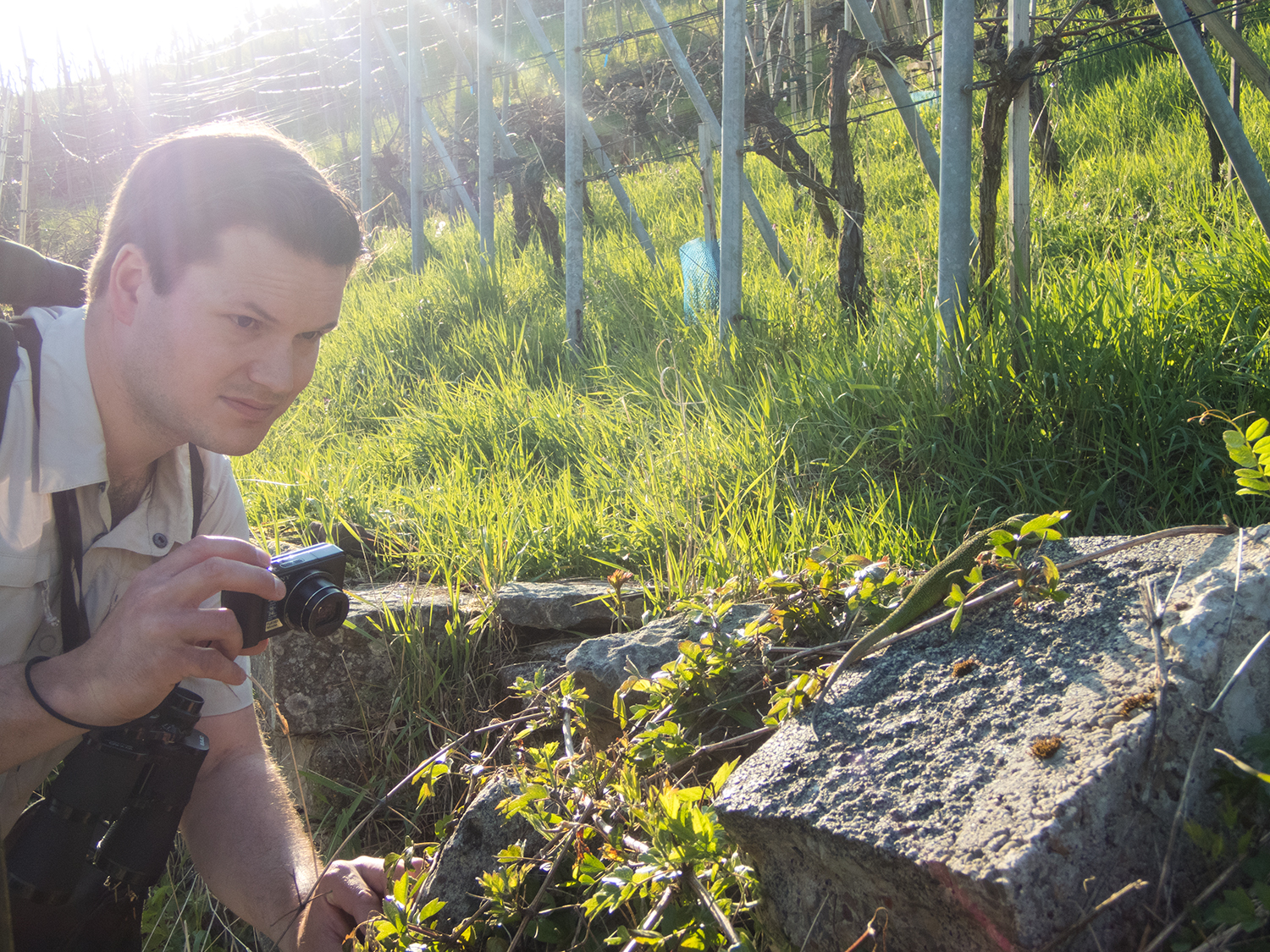
Here Markus is able to get quite close to a basking Green Lizard near the end of the day who would rather soak up the final rays than flee
The unimaginatively named Green Lizard (Lacerta bilineata) is more aptly called the Smaragdeidechse in German, or Emerald Lizard. We wouldn’t have found any had our original plans succeeded to meet late morning when it was still cold and rainy. Missed messages delayed us until late afternoon when the bad weather moved out and the sun warmed up the vineyards. Thanks to two sets of eyes, Markus and I ended up spotting 9 Green Lizards.
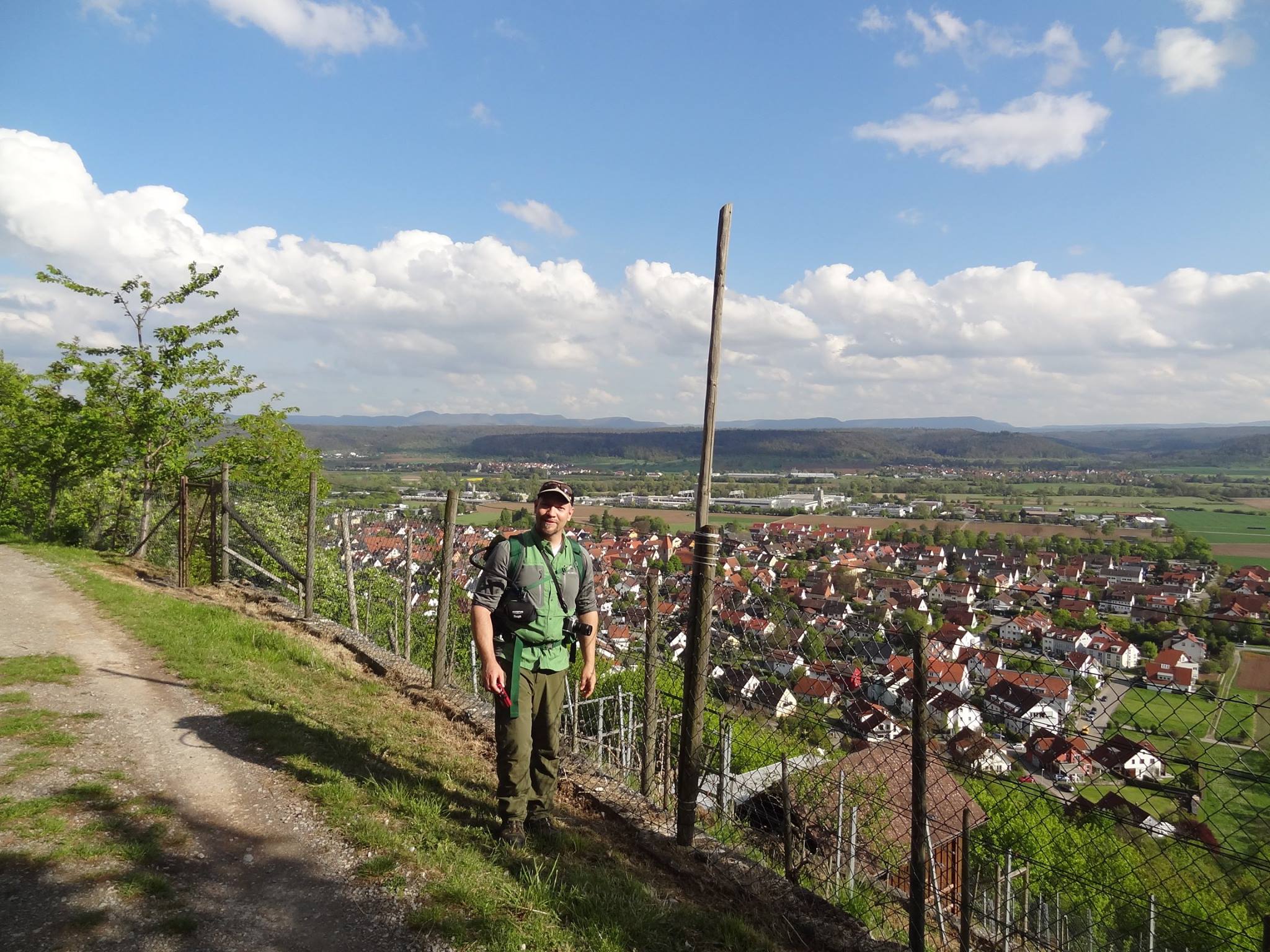
Their behavior seemed to become more relaxed at the end of the day. Early on they were highly timid and impossible to approach. But near sunset they let us get extremely close as they basked in the final rays of sunshine. This was, presumably, because it was more important for them to soak up heat to keep them warm until the next day instead of fleeing.
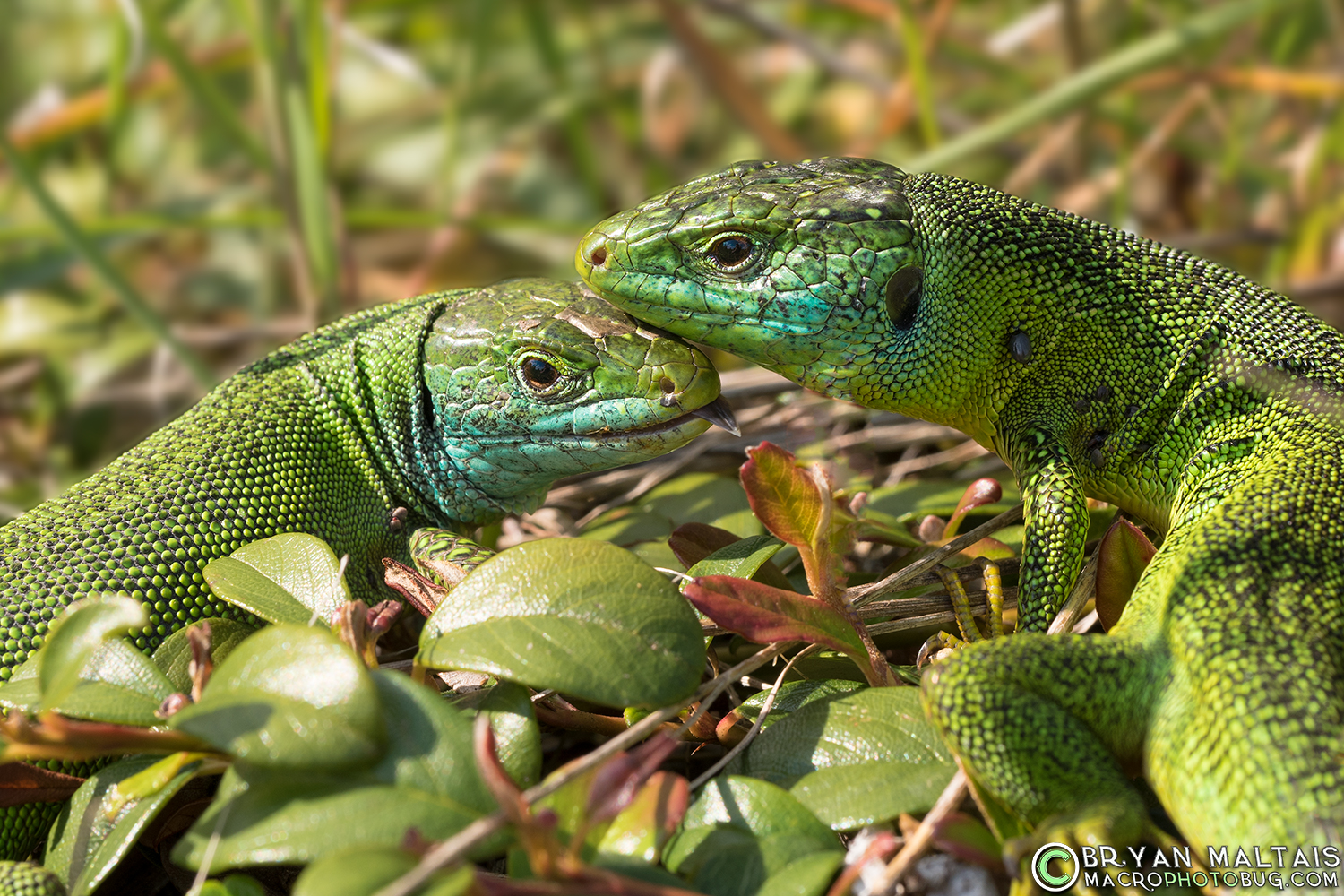 Their late afternoon malaise made for some exceptional photo ops. One individual lazily basked on a stone in the open who let me get close enough for a wide angle shot including the vineyards. I wanted to see just how close I could get so I tried to pet her with my finger. Apparently feeling very comfortable she licked my finger to see if it was edible! My favorite shot was of a mated pair of Green Lizards tranquilly sitting together atop a hedge who also let me get very close.
Their late afternoon malaise made for some exceptional photo ops. One individual lazily basked on a stone in the open who let me get close enough for a wide angle shot including the vineyards. I wanted to see just how close I could get so I tried to pet her with my finger. Apparently feeling very comfortable she licked my finger to see if it was edible! My favorite shot was of a mated pair of Green Lizards tranquilly sitting together atop a hedge who also let me get very close.
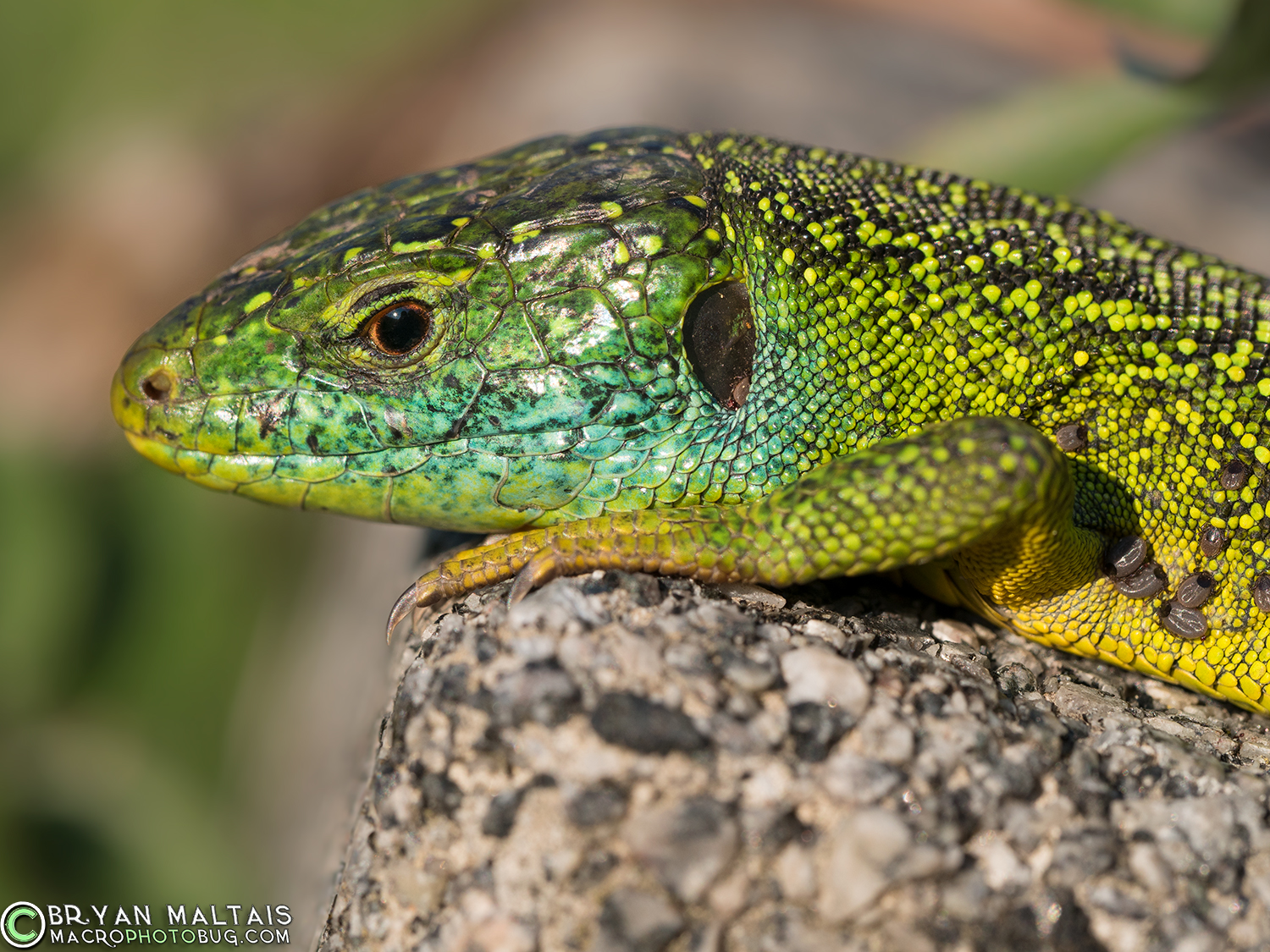
Habitat and Introduction
This population of Green Lizards was introduced to Wurmlingen. Though it’s difficult to verify, the first introduction came in the late 1800’s. The lizards’ proliferation in the area, however, didn’t seem to take hold until 3 more individuals were released within the past 20 years. They reportedly originated from Istria in Croatia, and Kaiserstuhl in Germany. There’s also question as to whether these are in fact the Western Green Lizard (Lacerta bilineata), or the Eastern Green Lizard (Lacerta viridis).
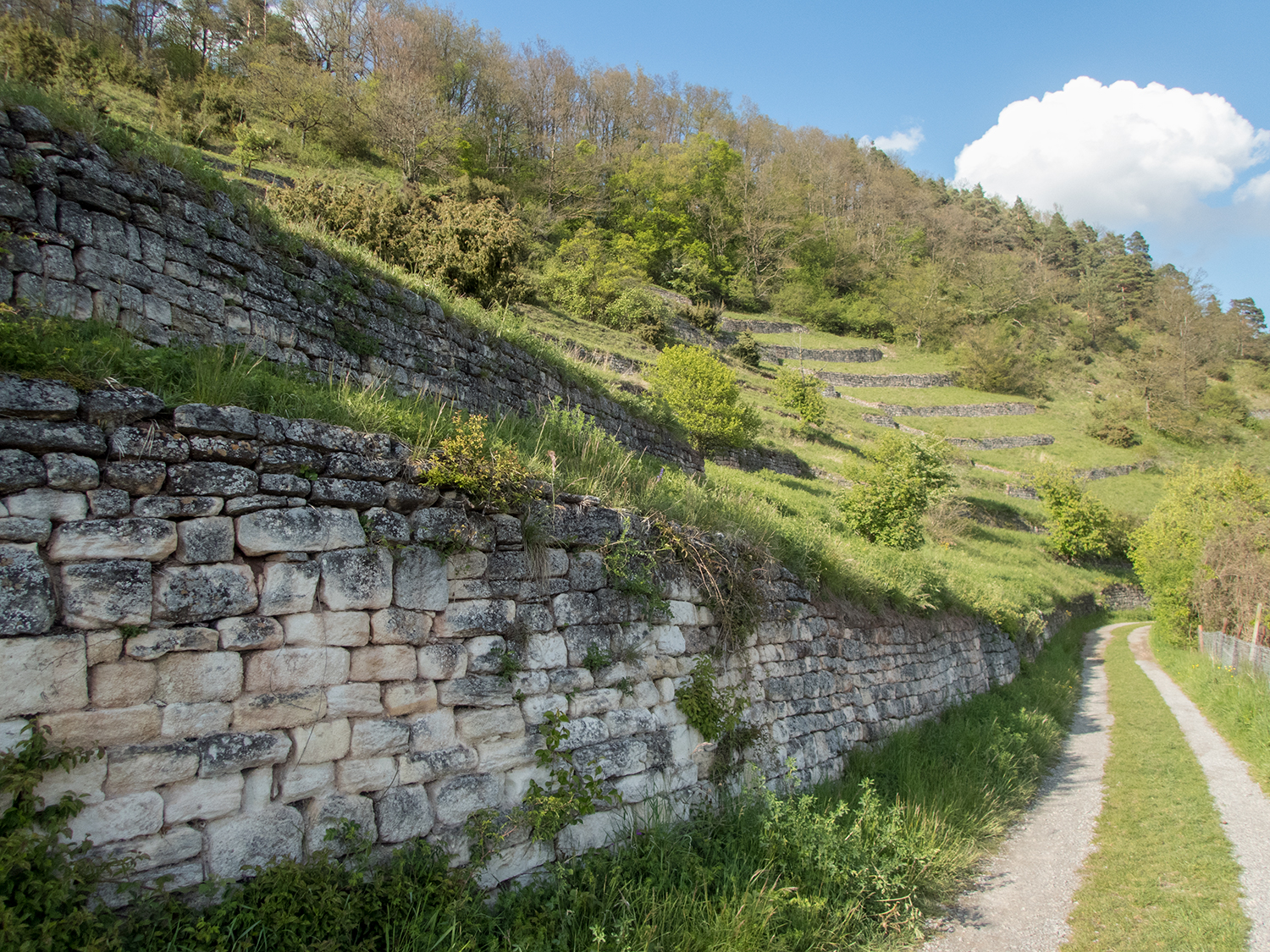
The south facing hills around Wurmlingen make for optimal lizard habitat. Terraced stone walls stand remnant from long-since abandoned vineyards that serve as ideal lizard apartment complexes. The hills also have a micro climate that’s warmer than the surrounding region. Three factors result in this heat retention; south facing position that receives sunlight throughout the day, open meadows with no trees to obstruct light, and limestone masses that absorb heat. Could it be that the presence of Green Lizards serves as a nice litmus test for growing wine grapes?
In addition to our success in finding Green Lizards, the area was strikingly beautiful to explore, and we also encountered many interesting birds. Walking through ancient vineyards with red-roofed villages in the valley below, and sunny, cumulus filled skies above was like strolling through a fairy tail. A Cuckoo calling from the forest added to the feeling.
Bonus Find: Ringelnatter, Grass Snake (Natrix natrix)
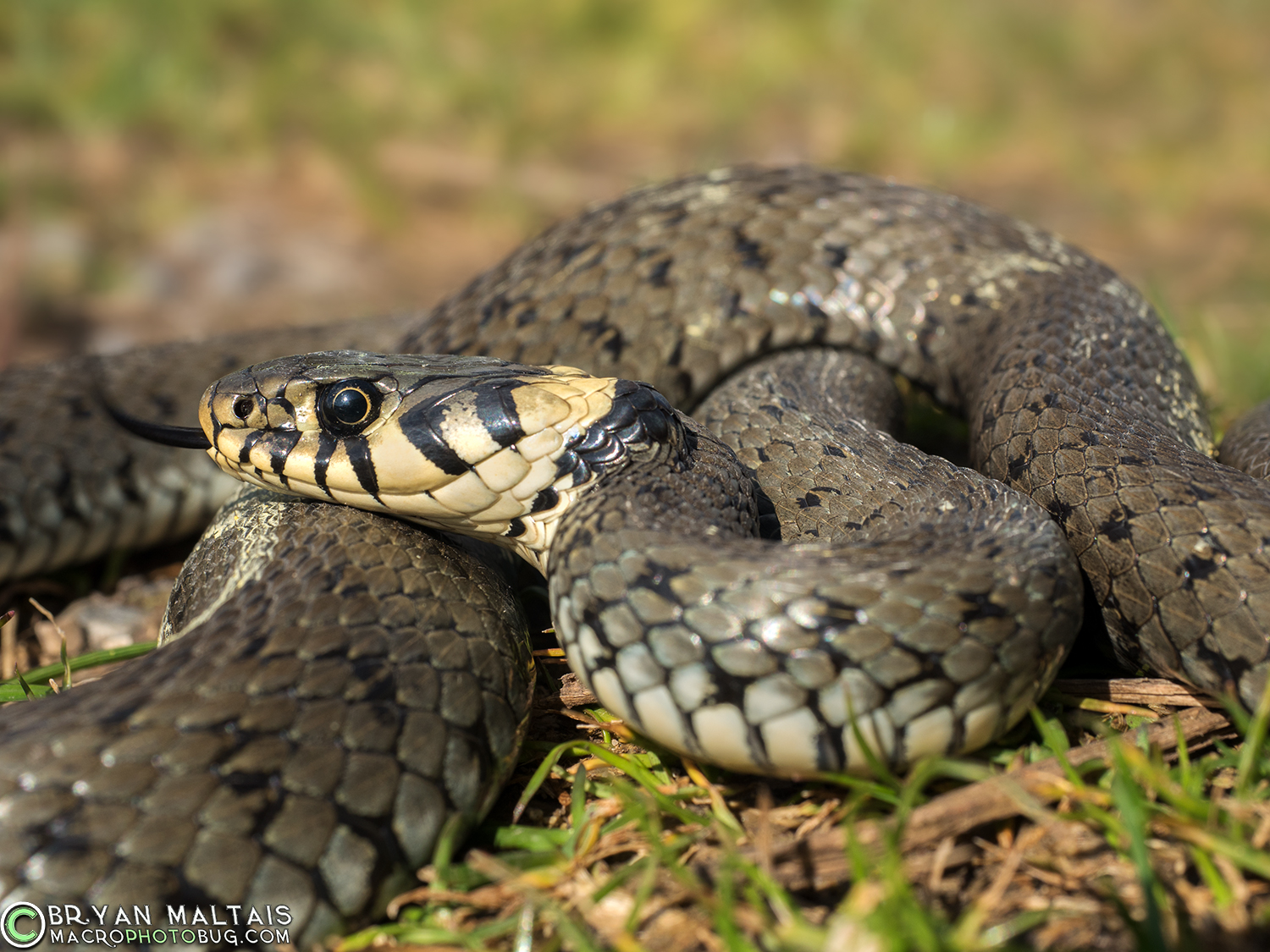
As Markus and I walked along a paved road near the Wurmlinger Kapelle he commented that he’d heard of a population of Grass Snakes living in the area, but he’d never encountered one despite many of visits. Just as he ended the sentence, we came across a big Grass Snake! 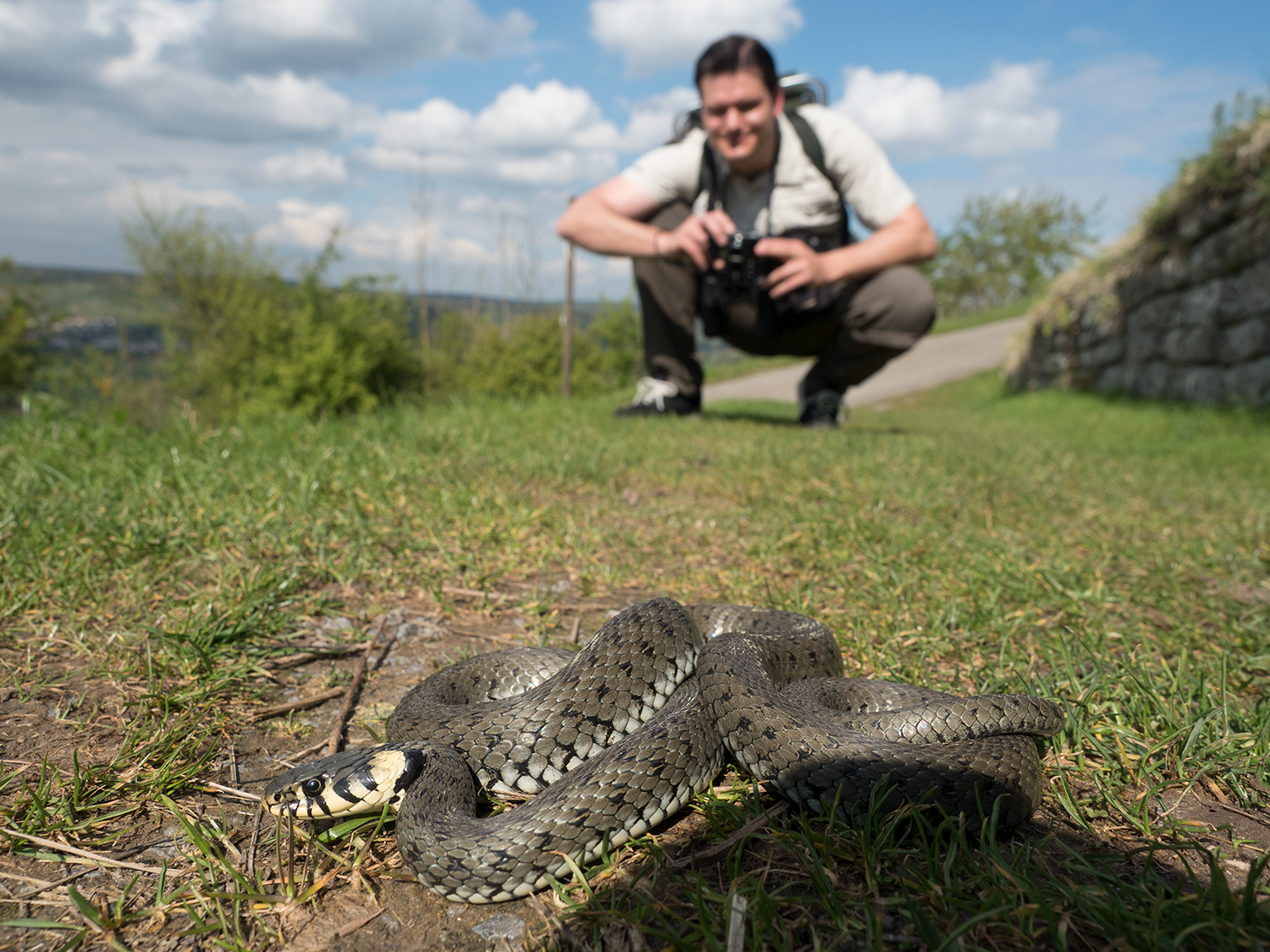 It didn’t try to bite, but flattened its head and hissed a lot. As expected, when I picked the Grass Snake up it released a putrid smelling mix of musk and crap that it smeared all over itself and me.
It didn’t try to bite, but flattened its head and hissed a lot. As expected, when I picked the Grass Snake up it released a putrid smelling mix of musk and crap that it smeared all over itself and me.
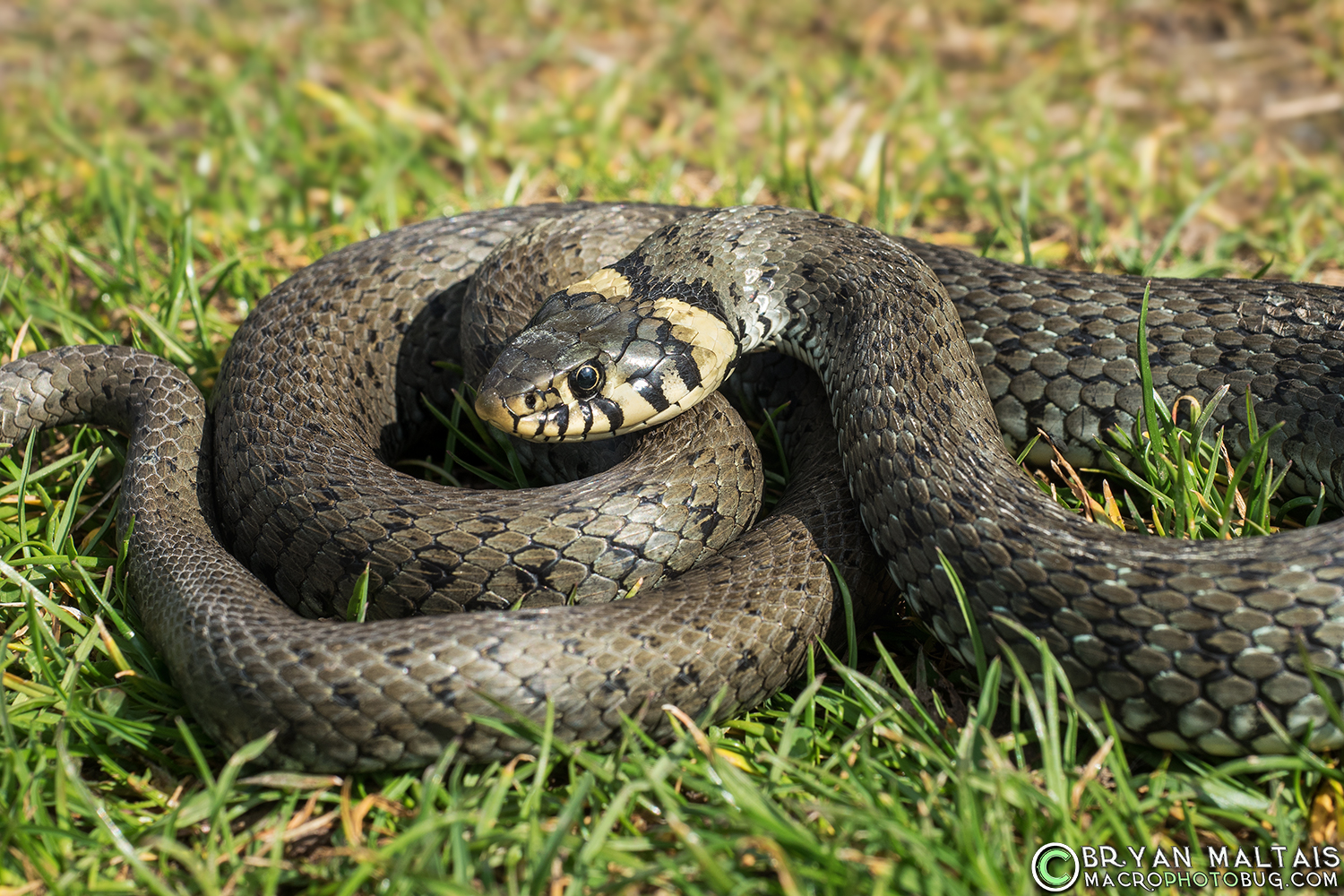 “Ringelnatter” translates to “Ringed Asp”. Asp is a word from antiquity meaning venomous snake, but the name is just a hold-over because the Grass Snake isn’t venomous.
“Ringelnatter” translates to “Ringed Asp”. Asp is a word from antiquity meaning venomous snake, but the name is just a hold-over because the Grass Snake isn’t venomous.
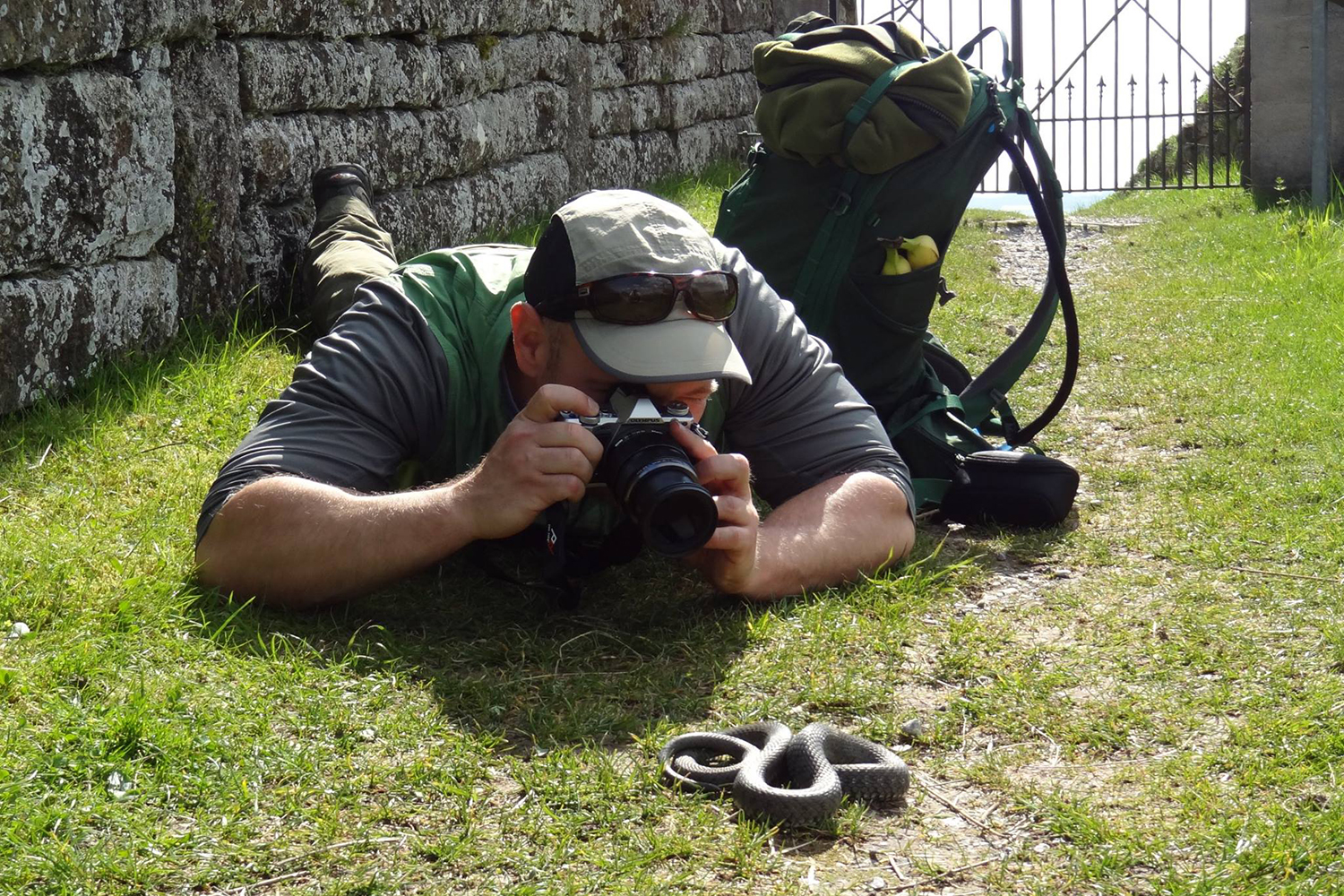 Photography Equipment Used
Photography Equipment Used
I used my Olympus OM-D E-M5 II body and 3 different lenses on this shoot. I walked around with my Lumix 100-300mm super telephoto (200-600mm full frame equivalent), assuming that the lizards would be too warry to get close to. For lizards that stayed put, I switched to my Olympus 60mm macro lens (120mm FF equivalent) for portraits with a nice creamy bokeh. I used my 12-40mm zoom (24-80mm FF equivalent) for “animal in habitat” shots.

